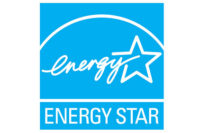
With the Version 3.0 release of Energy Star specifications for furnaces, furnaces that only meet Energy Star criteria for the U.S. South will carry this version of the logo.
According to Abigail Daken, furnace product manager for the Energy Star program at EPA, the latest release of furnace specifications is part of the cyclical nature of the program. She explained that Energy Star aims to qualify only the top one-quarter of products in the market. As product efficiency improves, EPA continually revises and heightens its requirements for Energy Star qualification. “Energy Star aims to provide a differentiator for consumers and for marketing purposes for manufacturers; not all units can qualify,” Daken said.
NEW REGIONAL LABEL
The new specs differentiate furnaces based on region, consistent with the recent rulemaking by the Department of Energy (DOE) to implement regional efficiency standards for HVAC equipment. Essentially, the regional specifications require higher efficiency furnaces in areas with colder climates. According to Version 3.0 criteria, the following requirements must be met for furnaces to earn the Energy Star label: gas furnaces in the U.S. North/Canada must meet or exceed 95 percent AFUE; gas furnaces in the U.S. South must meet or exceed 90 percent AFUE; oil furnaces in the U.S. (all)/Canada must meet or exceed 85 percent AFUE; and furnace fan efficiency must be less than or equal to 2 percent.Because the requirements are higher in the North, Daken explained, “Units that qualify in the North and in Canada will also qualify in the South.”
However, there will be a new regional label for furnaces that only meet Energy Star requirements in the South. In the Version 3.0 release, EPA stated, “Those furnaces that meet requirements for the U.S. South but not the U.S. North may only be labeled with the U.S. South Energy Star mark which clearly shows the unit only meets requirements for Southern states.”
Daken added that the reasoning behind this change is based on the potential payback for a high-efficiency furnace. “When you go to the South, because the heating needs are lower, you don’t get payback for a very expensive furnace - you can’t really make a serious claim that it’s going to be better for anyone’s pocketbook.” And, she continued, one important aspect of Energy Star’s brand promise is that qualified products will save consumers money in the long run.
“That’s why we did that separation. In the North it makes sense to have a very efficient furnace. And now we’re getting to the point where you can’t really say it makes sense nationwide anymore.”
FURNACE SPECS
Currently, EPA is in a transitional period for qualifying furnaces to Energy Star. The eligibility requirements specified in Version 3.0 will go into effect on Feb. 1, 2012. On that date, Daken explained, “Products that aren’t certified to meet the new requirements will drop off the list.” She added that this fall new products can only be added to the list if they are certified to meet the new specification.Version 4.0 requirements for furnaces will go into effect a year after Version 3, on Feb. 1, 2013. The only difference between Version 3.0 and Version 4.0 is that Version 4.0 includes “a requirement that the cabinet is tight and doesn’t leak,” Daken said. She added that the delay before implementing this requirement is intended to give manufacturers and labs time to get up to speed since the test method for air leakage is new.
DOLLARS AND SENSE
“I’ve heard that contractors will use Energy Star as an upselling strategy [to homeowners],” Daken said. “It gives them one more thing they can bring to the table and make it easier to sell high-efficiency equipment because homeowners recognize the logo.” However, Daken continued, “It’s been very clear that contractors can’t offer it as the only option. If they do, they’ll be underbid by someone who’s offering something else.”To encourage homeowners to purchase high-efficiency furnaces, Daken said contractors should help them evaluate the payback and inform them of local rebate programs and tax credits. “Any furnace that qualifies for Energy Star in the North will also qualify for a 25C tax credit,” she noted, adding that contractors may also find Energy Star’s Rebate Finder useful (it can be found by searching for “rebate” at www.epa.gov).
Furthermore, she said, explaining the payback of Energy Star-qualified products is a very strong selling point. “The way we set our [Energy Star requirements] is to find a level where it pays back to the consumer in the long run,” she said.
Contractors should educate themselves on which furnaces are qualified to Energy Star under the new requirements, and according to Daken, the best resource for them is the qualified product list, which can be found at www.epa.gov.
Publication date:07/25/2011









